Estimated walking time: 45 minutes
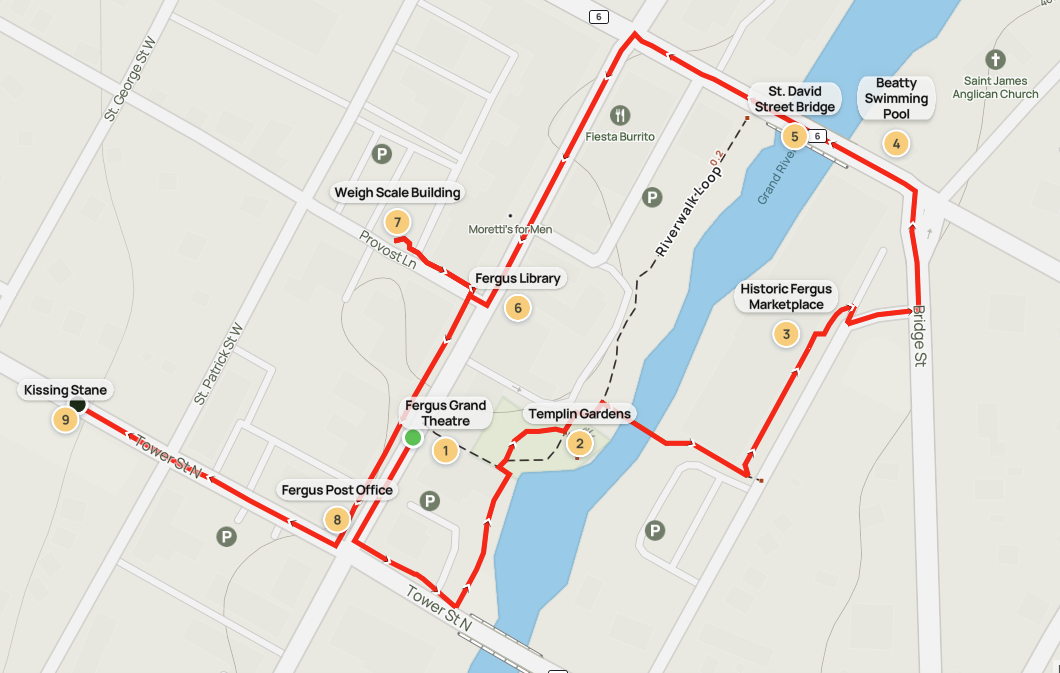
This walking tour has been designed to be as accessible as possible; however, please note that some sections include stairs and uphill paths. Please also ensure you adhere to the posted signage in the areas you are walking (i.e., park signage, safety signage, etc.).
The Township of Centre Wellington is located on the Treaty Lands and Traditional Territory of the Anishinaabe and the Haudenosaunee. For the full Land Acknowledgement, please visit our Indigenous Relations & Reconciliation page.
1. Welcome to historic Fergus, founded in 1833! We begin this part of the walking tour at the Fergus Grand Theatre. Established in 1928, Sam Fardella transformed a former barn into a “modern movie theatre.” On its opening night, August 28, 1928, Sam received a telegram of best wishes from Louis B. Mayer, head of MGM Hollywood. While parts of the interior have evolved over time, the original stone foundation and exterior remain relatively unchanged. Over the years, the theatre has hosted not only movies but also plays, concerts, and other live performances. Today, it continues to serve the community as a venue for a wide range of artistic, cultural, and corporate events.
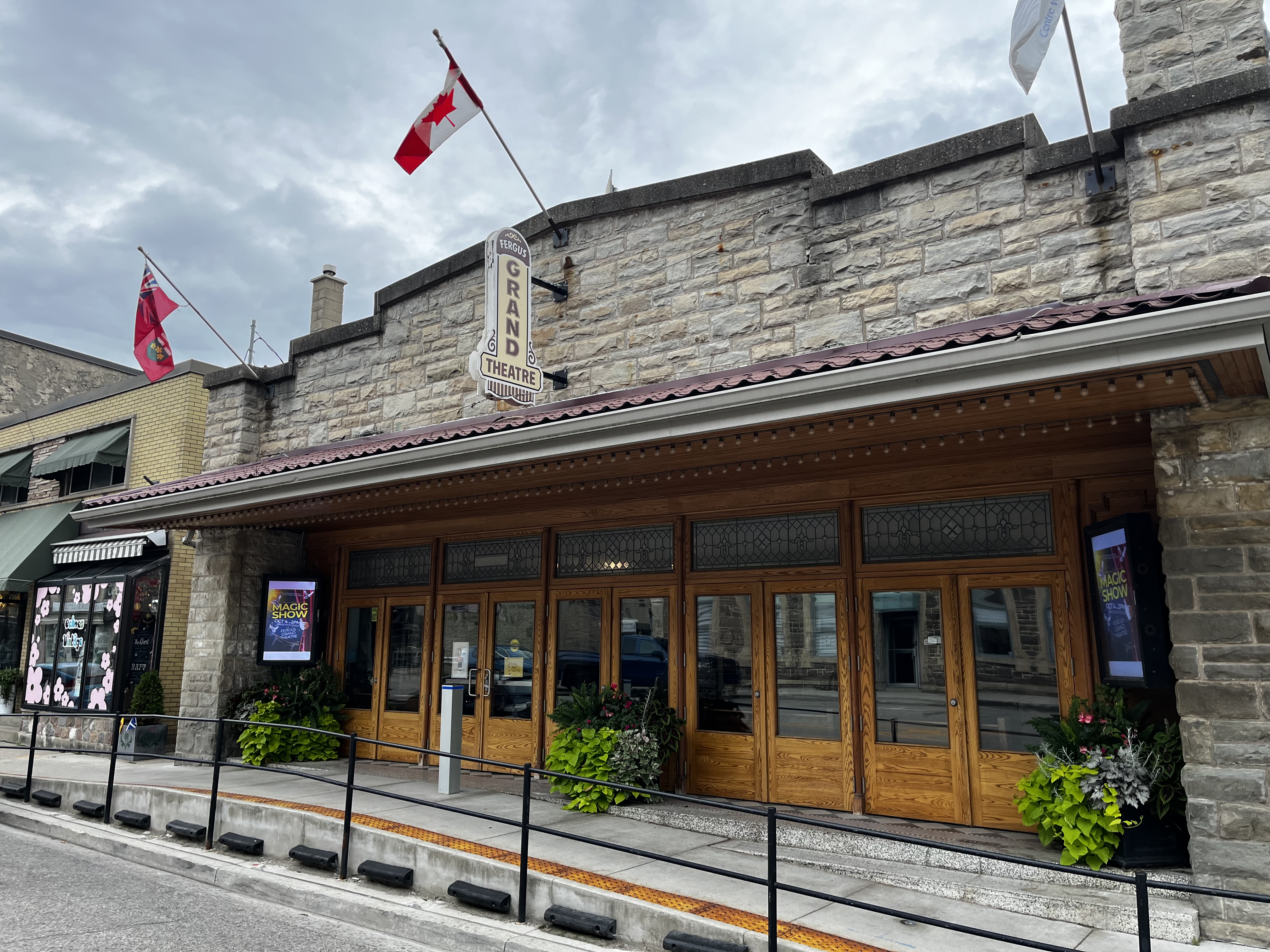
2. Next, we head down to Templin Gardens, a unique limestone-walled garden carved into the cliffs of the gorge. Featuring landscaped beds, winding pathways, and spectacular stonework, the gardens were commissioned in the late 1920s by J.C. Templin, owner of the local newspaper, as a gift to his wife. Built with stone from the nearby Gow limestone quarry, it showcases a distinctive craftsmanship of Scottish stonemasons from a bygone era. The stone stairway to the river’s edge offers a breathtaking view of the rapids, whirlpool and gorge (Please note that access to the gorge requires descending a set of steep stairs and may not be suitable for all visitors).

3. Our next stop takes us across the Milligan Footbridge, the gateway to downtown Fergus and a fantastic vantage point for viewing the river. As you cross, take in the sweeping views of the gorge and the historic buildings lining the river’s edge. The bridge leads directly to the Fergus Marketplace, a prominent landmark first erected in 1878. Parts of the basement on the eastern end actually date back to the 1850s, while the main section of the east, or “foundry,” wing was built in 1878, with further additions in 1890, 1908, and 1916. For many years, the site was home to the Beatty Bros. Foundry, whose manufactured goods were exported worldwide. Later, successor companies continued operating from the complex, which supported manufacturing for decades, before the foundry eventually closed. The building then became a bustling flea market before being repurposed into the Fergus Marketplace we see today, now home to a variety of local businesses.
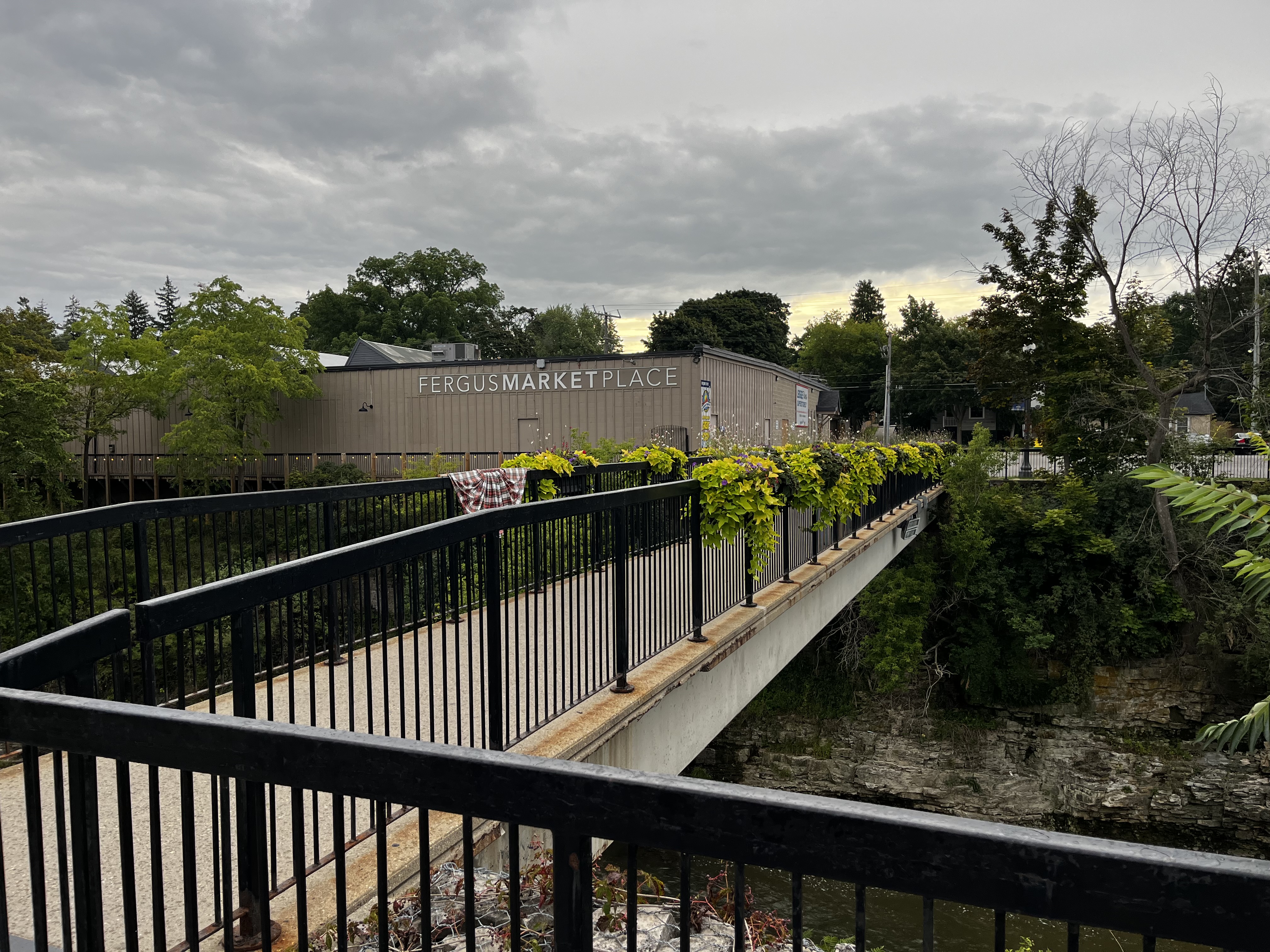
4. Continuing with the Beatty Brothers theme, our next stop is the old Fergus Swimming Pool, also known as the Beatty Pool. Built in 1930 by employees of the Beatty Brothers factory, it was constructed with pride and quality materials, its distinctive design reflecting its recreational purpose. The pool was created to meet a community need after a drowning in the Grand River—up until the 1930s, the whirlpool at Templin Gardens had been the town’s most popular swimming spot. The Beatty Pool went on to serve the community for more than 75 years before finally closing on October 17th, 2005.
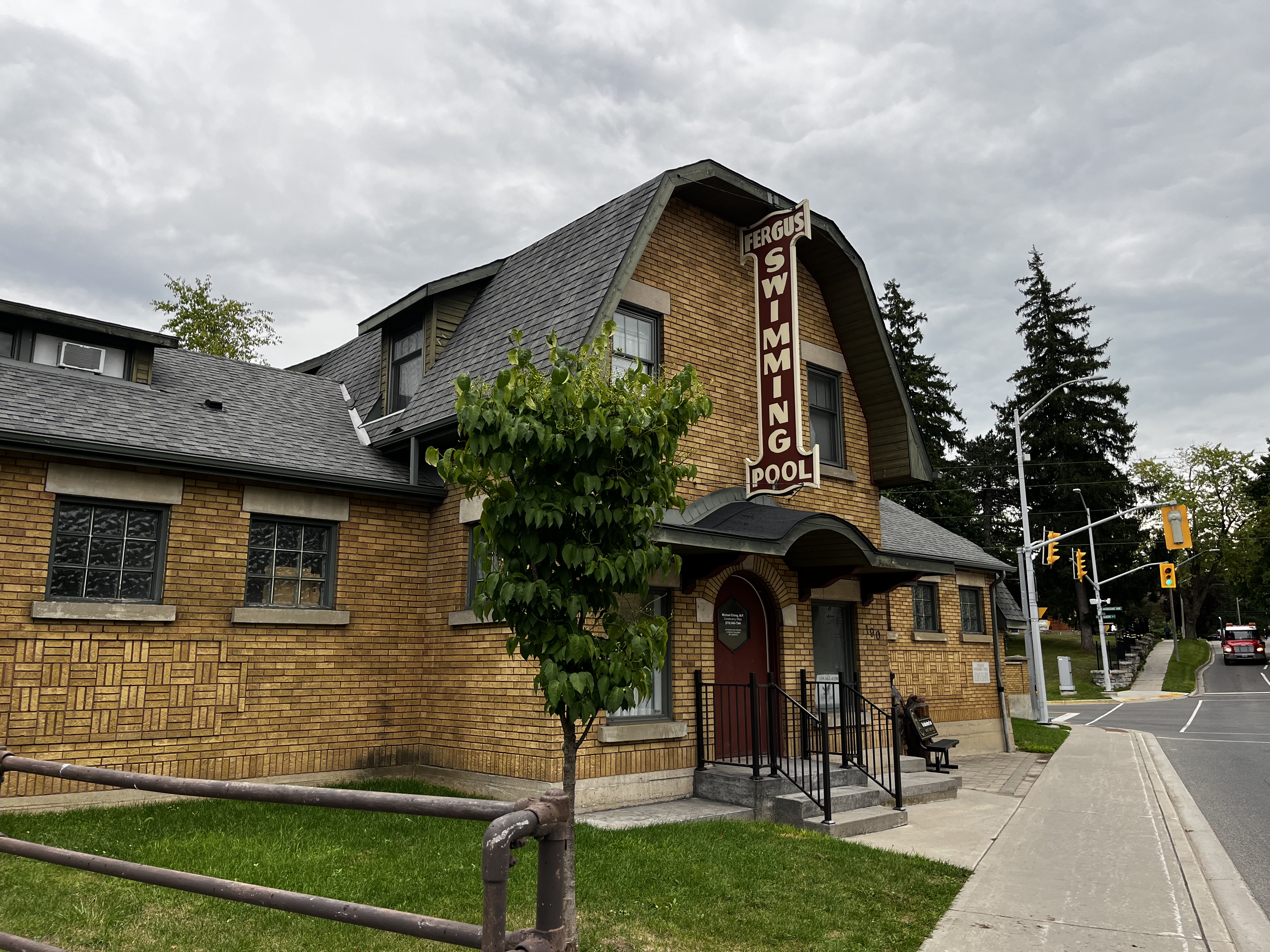
5. Next, we cross back over the Grand on the St. David Street Bridge. Be sure to look over your shoulder for a stunning view of the old Foundry’s steam stack. From the right side of the bridge, you can look upstream to the falls by Confederation Park, while the left side offers a view of the rapids. From here, turn onto St. Andrew Street and take a stroll through downtown Fergus, where you’ll find a variety of shops and restaurants lining the historic main street.
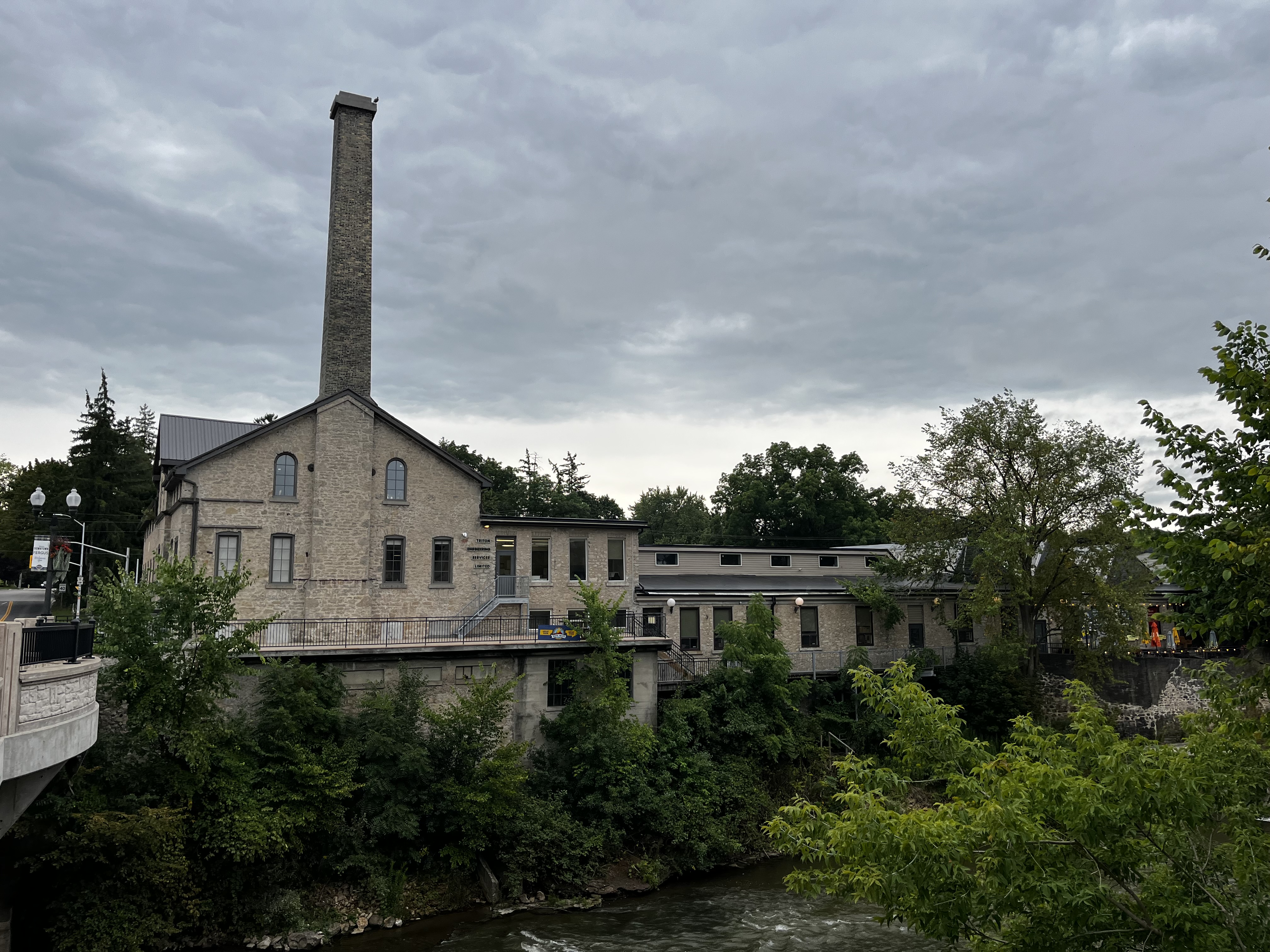
6. As you explore downtown Fergus, you’ll come across the Fergus Public Library. Like its counterpart in Elora, it is a Carnegie library, but instead of the neo-Georgian style, it was designed in the Beaux-Arts style. Uniquely, it is one of the few Carnegie libraries constructed of stone (the Elora library, by contrast, was built with brick). The library was funded with a $6,000 grant from the Andrew Carnegie Foundation in 1908 and opened its doors in 1911. The roots of the Fergus Library, however, go back much further. Its origins can be traced to 1837, when Elizabeth and A.D. Fordyce began lending books from their home, making it one of the oldest libraries in Ontario.
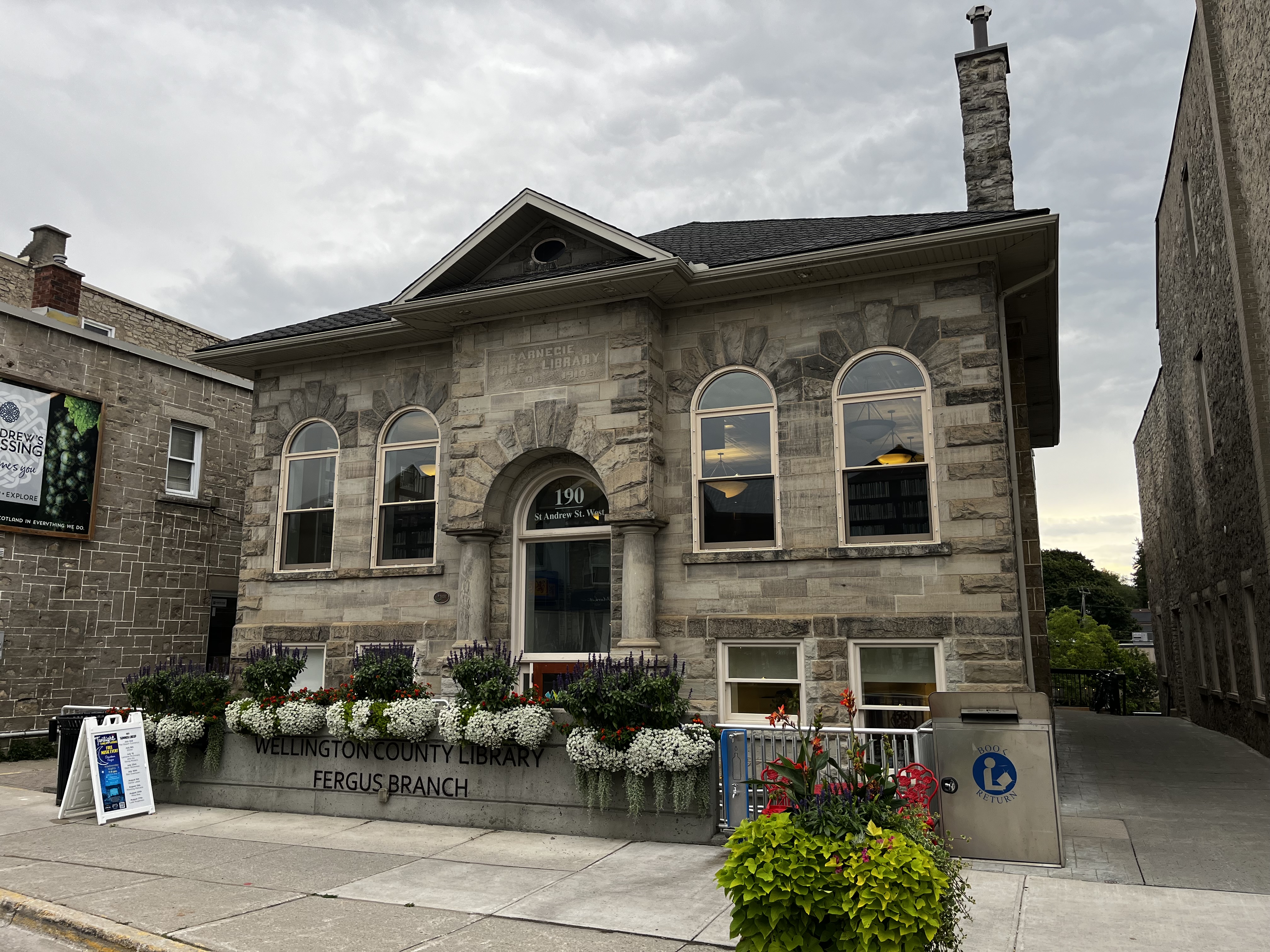
7. After the library, let’s take a quick turn onto Provost Lane to see the old Weigh Scale Building, tucked just behind St. Andrew Street at the edge of the parking lot (you’ll also find public washrooms here). Built in 1904—the same year the Grand Trunk Railway (later CNR) added a spur line along St. Patrick Street—this one-and-a-half-story coursed rubble limestone structure was the original site of the settlement’s old cattle yards and is one of the few remaining scale buildings in Ontario. Unlike most 19th-century scale buildings, which were timber-framed and thus did not survive, this structure was constructed in stone. For sixty-one years, it housed scales used to weigh coal, lime, grain, livestock, and other commodities for shipment. The land itself has an earlier history, first occupied in 1833 by settlers in a log home. One of them, James Buist, was nicknamed “The Provost,” a name that inspired the naming of the street.

8. As we head back to St. Andrew Street and near the intersection with Tower Street, you’ll spot the Fergus Post Office, a sister building to the one in Elora. In the early days, mail reached Fergus via Elora—first on foot or by horseback, and later by stagecoach. The first post office opened in 1836, run by James McQueen, a Glasgow University graduate who had just arrived in Fergus. He also served as the schoolmaster for the one-room log school located on the site of one of today’s Fergus elementary schools, which now bears his name. McQueen ran the post office from his home until 1848, when growing demand led him to build a stone block on St. Andrew Street to house the post office and a store. That building served the community until the current post office was constructed in 1912.
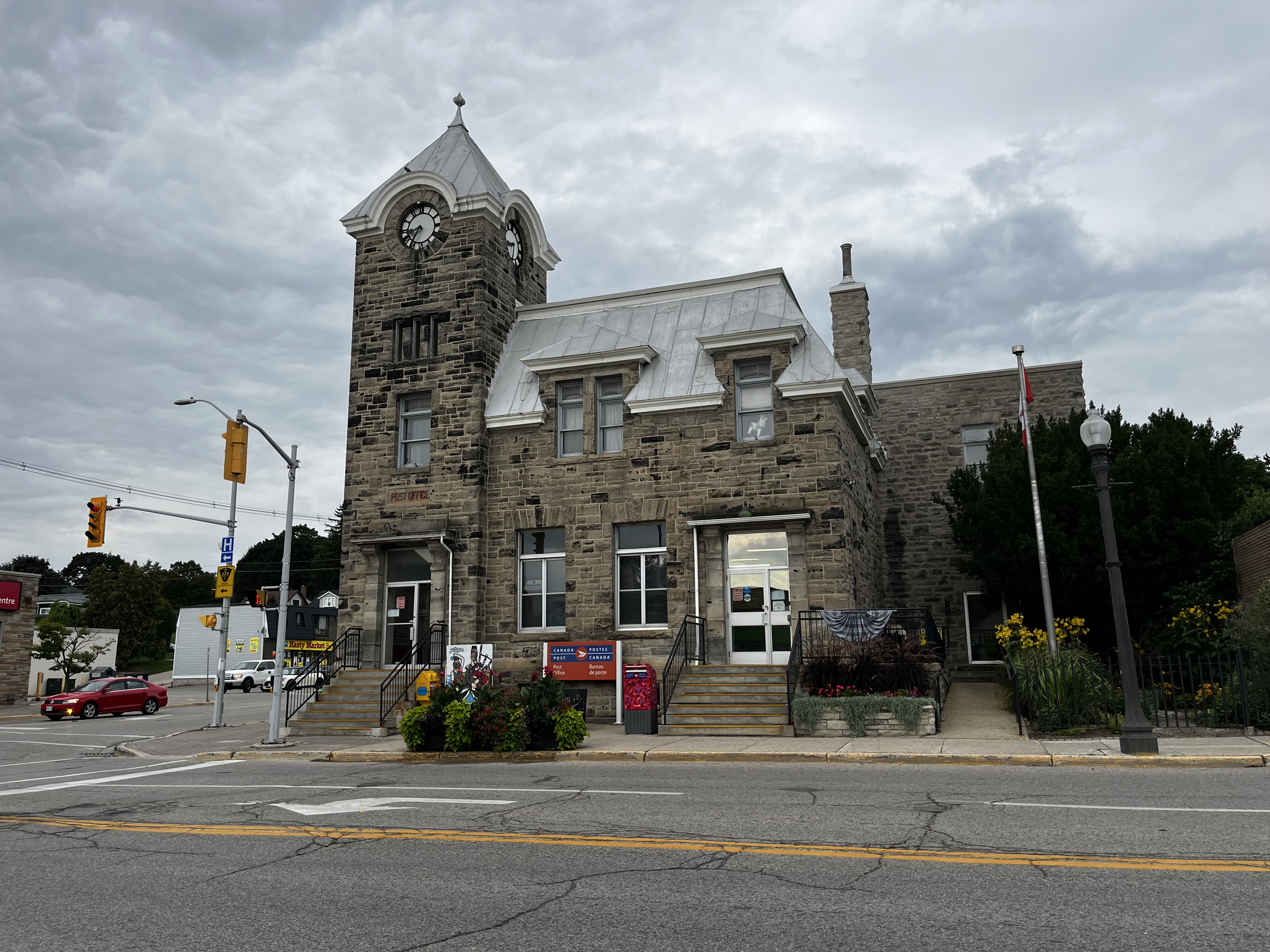
9. Last, but not least, our Fergus Walking Tour concludes at the iconic Kissing Stane (stane is the Scots word for stone), nestled partway up the hill along Tower Street. In the 1830s, a granite stone was discovered in the forest near St. Andrew’s Presbyterian Church when the land was first cleared. Around 1870, a bandstand was built nearby, quickly becoming a favorite gathering spot for young Victorian couples. Local legend has it that this was the only place in Fergus where public displays of affection were tolerated, and it soon earned the name “Kissing Stane.” Sitting on the stone for a kiss is said to bring good luck—a tradition that continues today. In the early 20th century, plans to replace the old bandstand included a misguided attempt to blast the stone with dynamite. Though the plan was never carried out, the drill holes are still visible today.
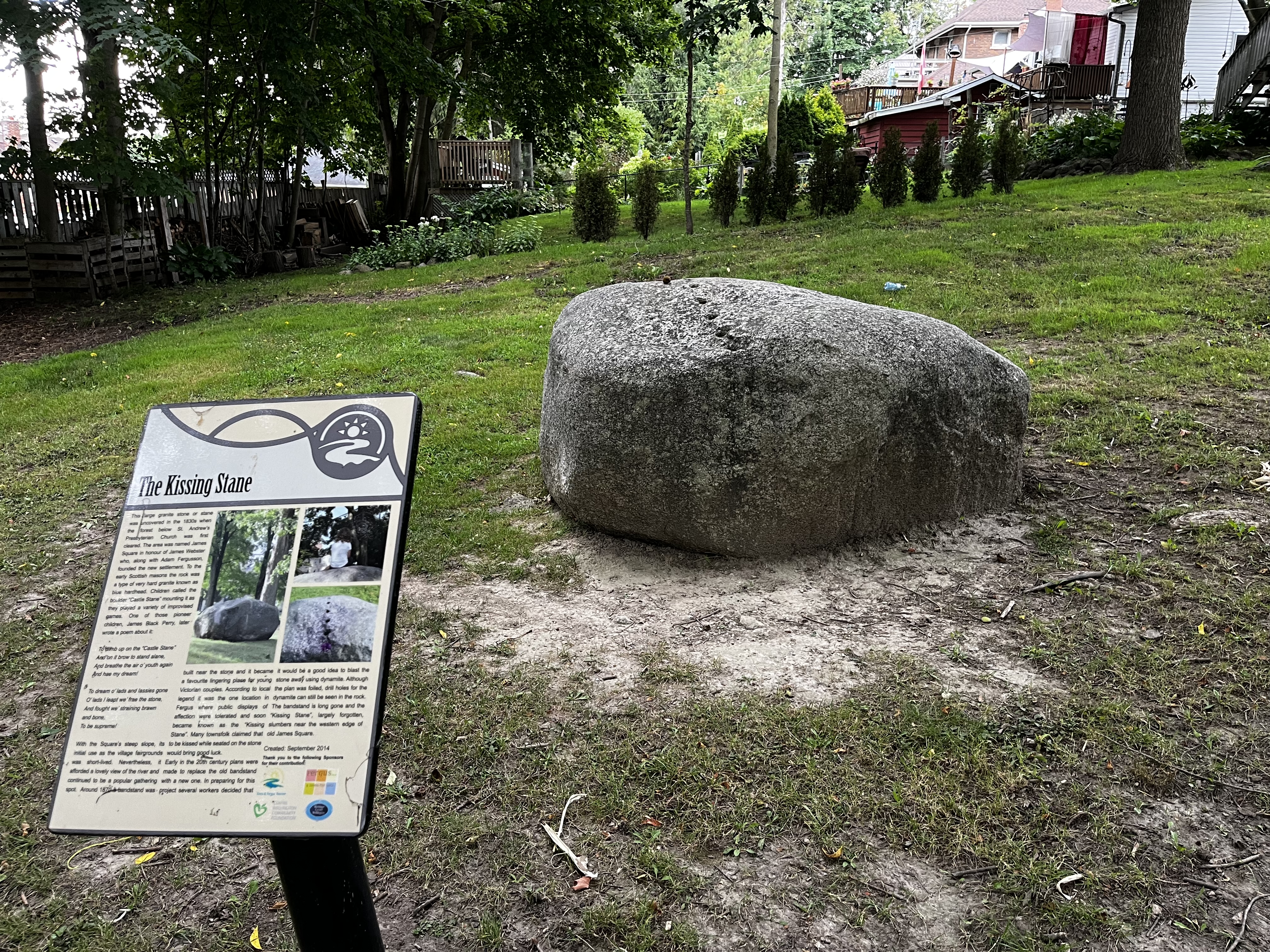
Check out the Downtown Fergus self-guided tour of Heritage buildings and historically significant landmarks sprinkled throughout the downtown core.
Ready to check out Belwood? Here are some things you can do and see: 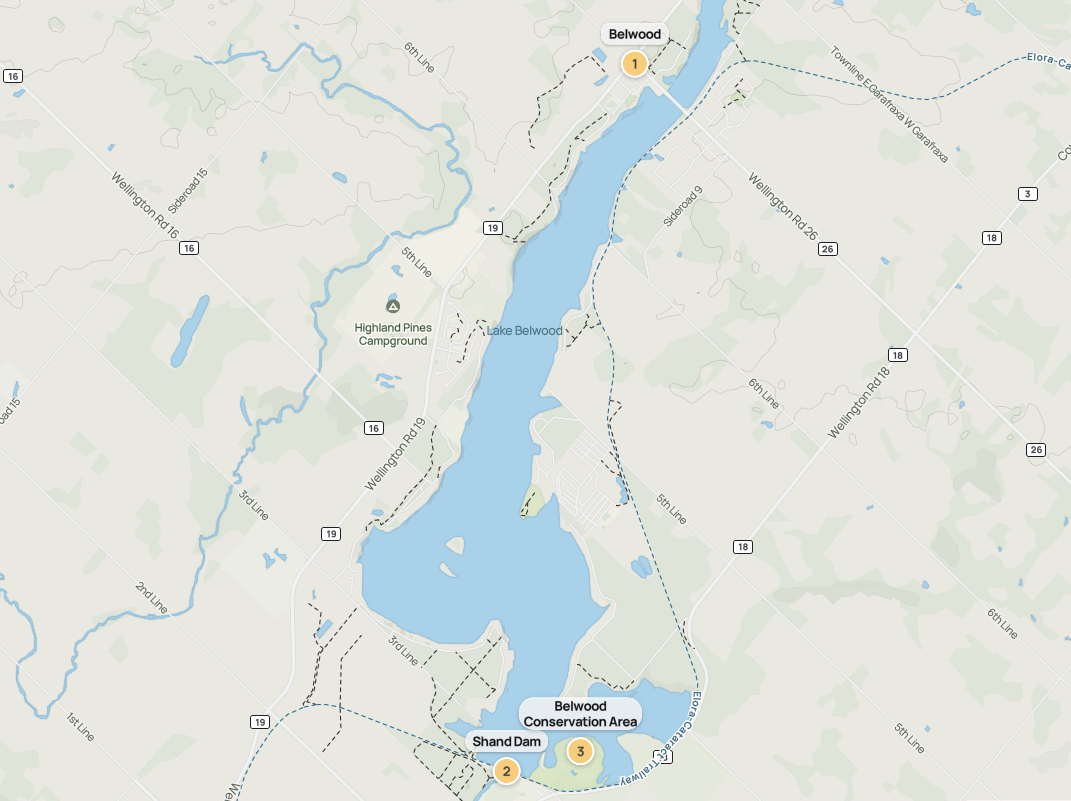
1. Belwood Lake
- Conservation Area & Shand Dam: At 12km long, Belwood Lake was created in 1942 with the construction of the Shand Dam which was built for flood control, hydro power, and water conservation. It was the first dam in Canada constructed specifically for conservation purposes! Work on the dam began in 1939, just before WWII began, and was completed by January 1942. The project cost $2 million (equivalent to nearly $37 million today!) and employed 200 men. At the time, the top of the dam carried a Canadian Pacific Railway track, but today it is crossed by the Cataract Trailway, which offers stunning views of the Grand River Valley.
- The Conservation Area offers a variety of outdoor activities, including hiking and cycling trails, camping, designated swimming areas, fishing, and more. For details about these activities and general information, be sure to visit the Belwood Conservation Area website.
2. Belwood Town
- In the quaint town of Belwood, which traces its beginnings to 1851, two historical buildings stand out—the old schoolhouse (24 North Broadway St.) and the Belwood Town Hall (36 Queen St.).
- The old schoolhouse, built in 1861, originally served the educational needs of the rural community. After operating as a school for more than a century, it went on to serve several roles: a weaving school, a popular restaurant, and today, a live music venue.
-
The Belwood Town Hall, built in 1872 and located on the edge of Belwood Lake, is now a Township-owned facility. Its first use was as a drill shed for the volunteer militia, though it also occasionally hosted events for the Agricultural Society. Over time, it became a venue for Fall Fairs and community meetings. Today, it continues to be a vibrant gathering place, hosting everything from club meetings and birthday parties to yoga classes and other community events.























